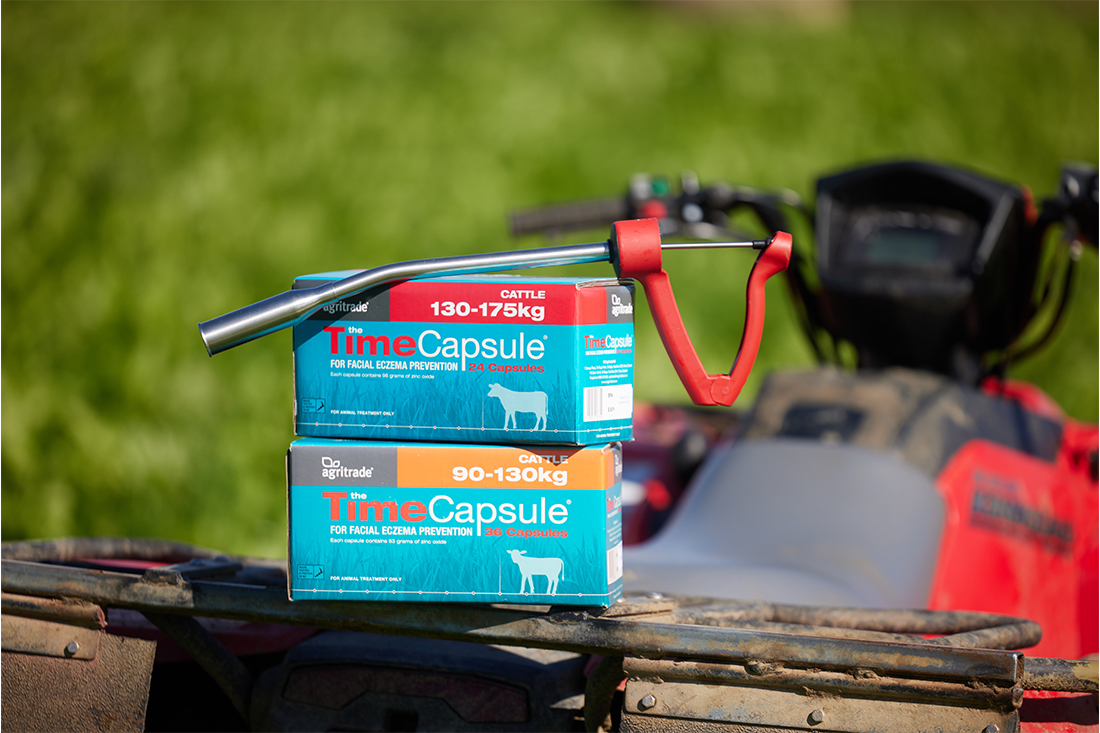Facial Eczema can cost you significantly if not prevented – and often only one in 10 animals will show obvious signs of infection.
What is Facial Eczema?
Despite the misleading name, Facial Eczema (FE) is a disease of the liver not of the skin.
It occurs as a result of ingesting toxic spores produced by the fungus Pithomyces chartarum, which grows readily in warm, humid conditions within the base of pasture.
The toxin, Sporedesmin, travels to the liver, causing significant damage to the bile ducts. Impaired liver function results in a build-up of toxins and reduced production of fats, protein and energy essential for livestock to grow and produce products such as milk and meat.
How does Facial Eczema affect cows and production?
Fewer than one in 10 animals affected by Facial Eczema will show the clinical symptoms we historically have associated with the disease, such as peeling skin, irritation, shade seeking and udder discomfort. Commonly, the only evident symptoms of Facial Eczema are a drop in milk production or growth rates, which are often falsely attributed to other causes and result in cows being dried off earlier than their potential and heifers not meeting target weights.
Facial Eczema can cost you significantly in lost production in both your milking herd and your young stock if not prevented. It is estimated that Facial Eczema costs New Zealand farmers $332 million annually1 and studies have shown a drop of 0.14 – 0.35 kg MS per cow per day when affected by Facial Eczema2. These all come at a large cost to your farming operation.
How can I check for Facial Eczema?
Pasture spore counts are valuable for determining your farm’s risk level.
Although useful as a prompt to test, regional spore counts should not be relied on for making individual farm decisions. Consecutive tests on your farm from multiple paddocks will provide a more reliable indication of your challenge and when prevention methods should be implemented.
How can I combat Facial Eczema?
Fungicide sprays may be an option when spore counts are low; however, once spores are consistently at or above 30,000, Zinc is your best option to prevent Facial Eczema. When administered orally via a bolus, in water or feed, zinc binds to and inactivates the Sporedesmin toxin.
The Time Capsule® zinc bolus from Agritrade® ensures a consistently sufficient daily dose, in contrast to zinc delivered through water or in feed, where doses vary from animal to animal and day to day.
Developed specifically for Facial Eczema prevention in New Zealand over 25 years ago, the Time Capsule® comes in a range of convenient sizes to fit each class of stock so you can protect everything from your milking cows to your future herd. The Time Capsule® reaches protective zinc levels within 48 hours and provides four weeks of peace of mind that your cattle are protected, and should you require longer coverage, a second treatment can be given safely.
Visit your local Farm Source store for more information on Facial Eczema and how the Time Capsule® can help your herd reach and maintain its production potential this season.
